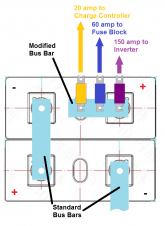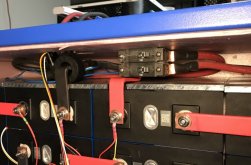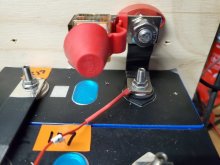Inq720
Odysseus, expert on the Siren's call
I've received my (4) Lishen 272 Ah cells and have started my first Top Balance. Normally, I know one typically has a single positive post and a single negative post. I have a limited volume for mounting my system in a boat, but will have ready access to the top of the battery. Consider, that it seems reasonable that I'll have three main connections:
Thank you for your help.

- 150 amp Inverter.
- 60 amp lead going to a fuse block for small load items.
- 20 amp lead coming from the charge controller.
- No remote positive bus that I'd have to put is some remote / obscure place with limited access. I'd have ready access to the top of the battery with the three fuses.
- Reduce part count, no main wire to remote block, no remote block, no mounting hardware, no lugs... etc. IOW, less to corrode and cause issue long-term.
- Direct connection of the loads to the positive post. The largest load right at the cell post.
- Once in the case with custom ABS printed top, the only exposed posts would be negative and the fused ends. The fuse side connected to the modified bus bar will be under plastic. Thus an accidental short (dropped tool) would be across the single negative post and the end of a fuse... thus blowing the fuse... not the tool.
Thank you for your help.





